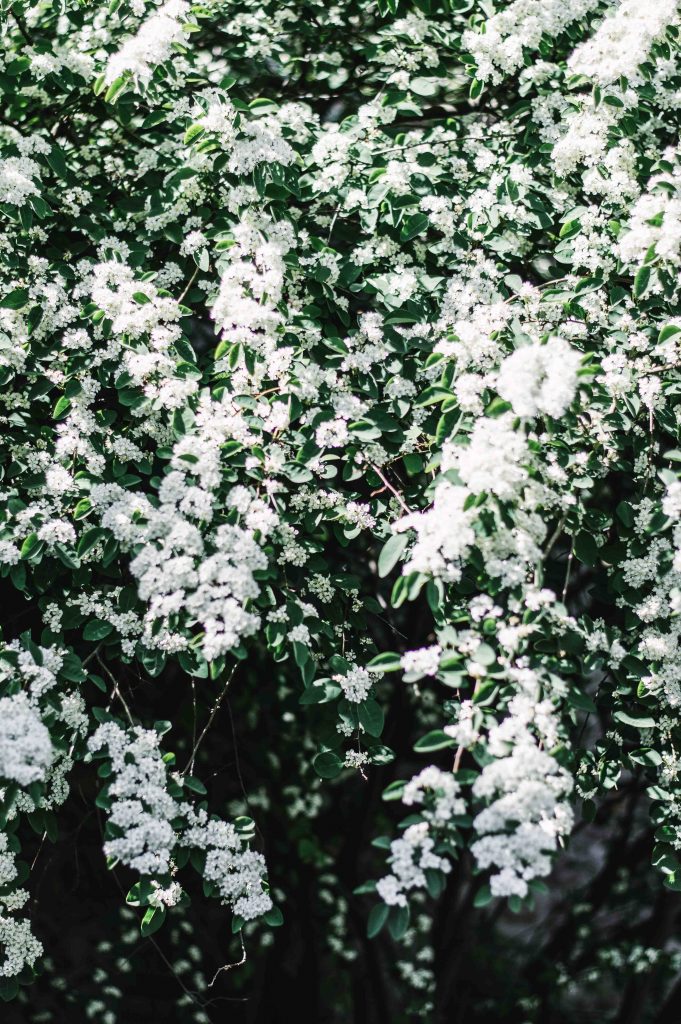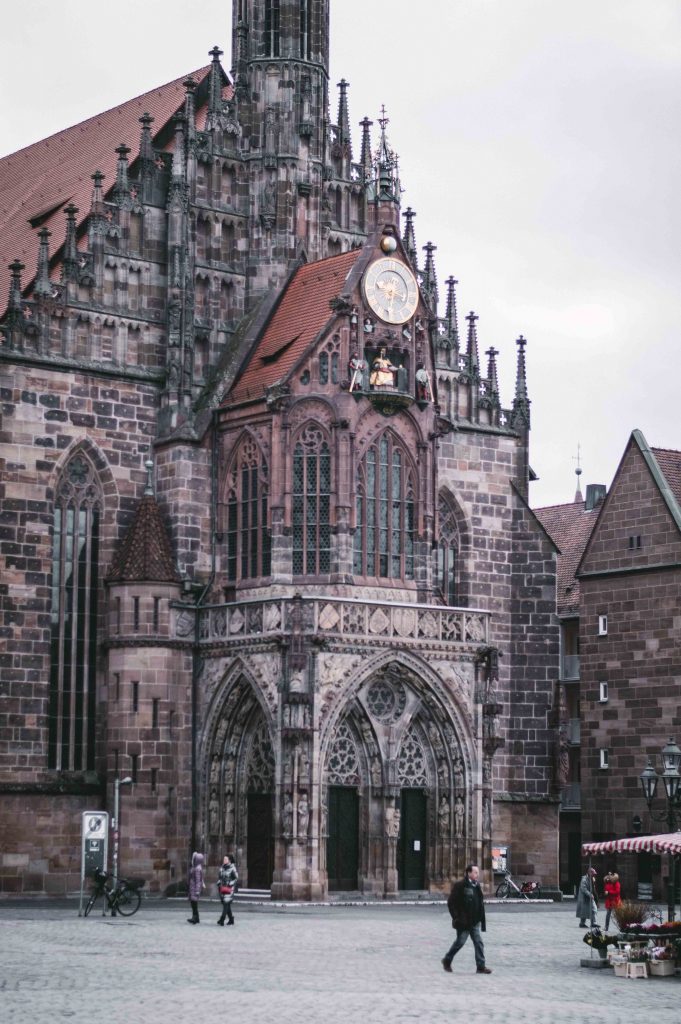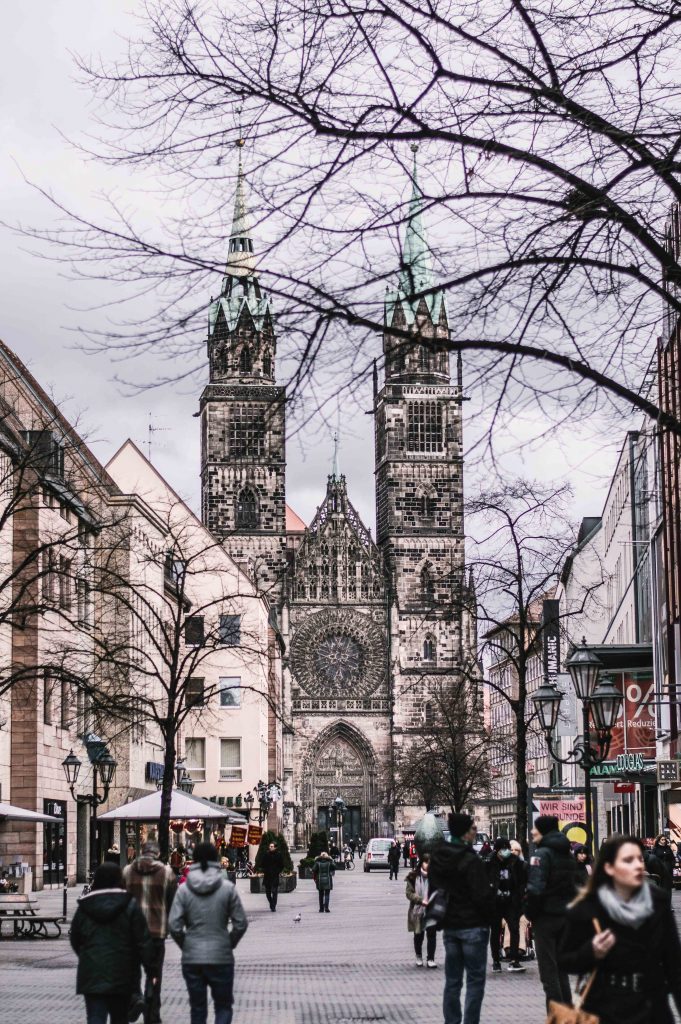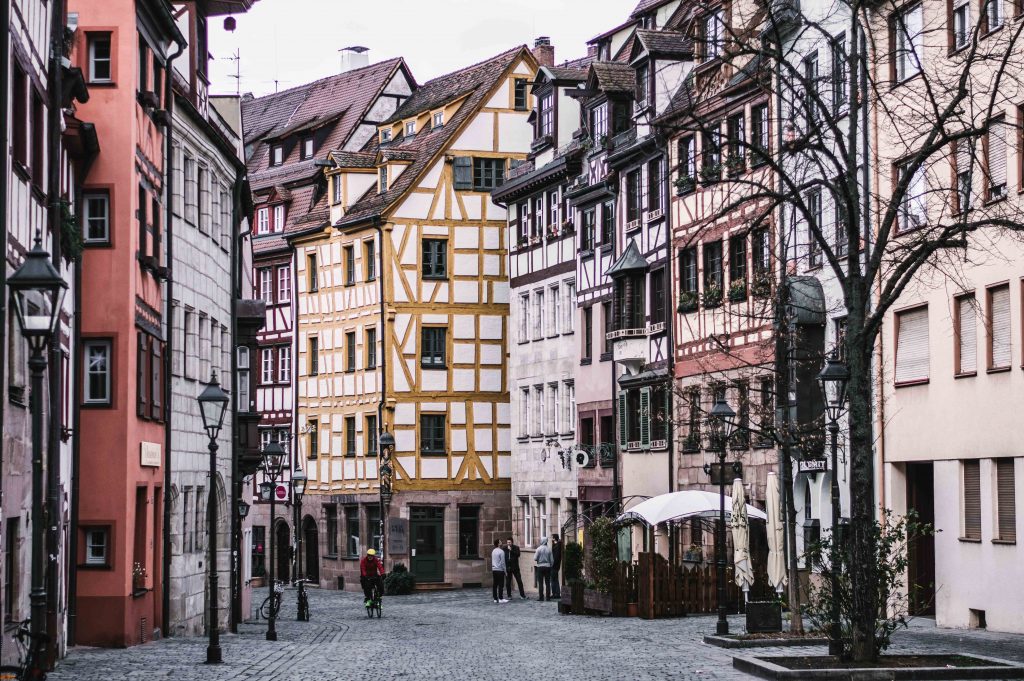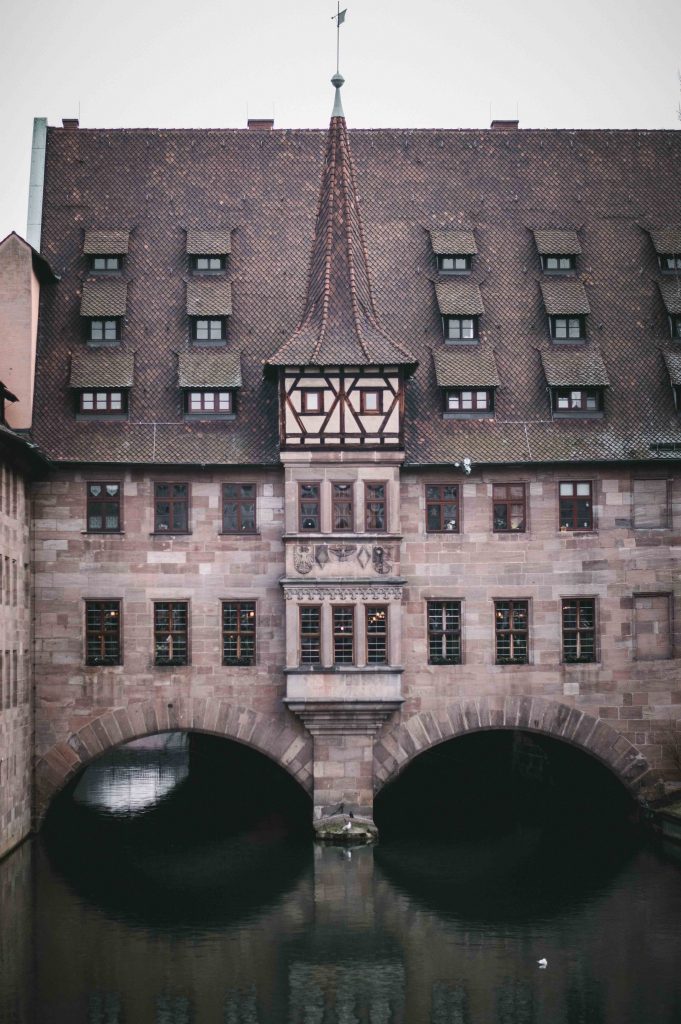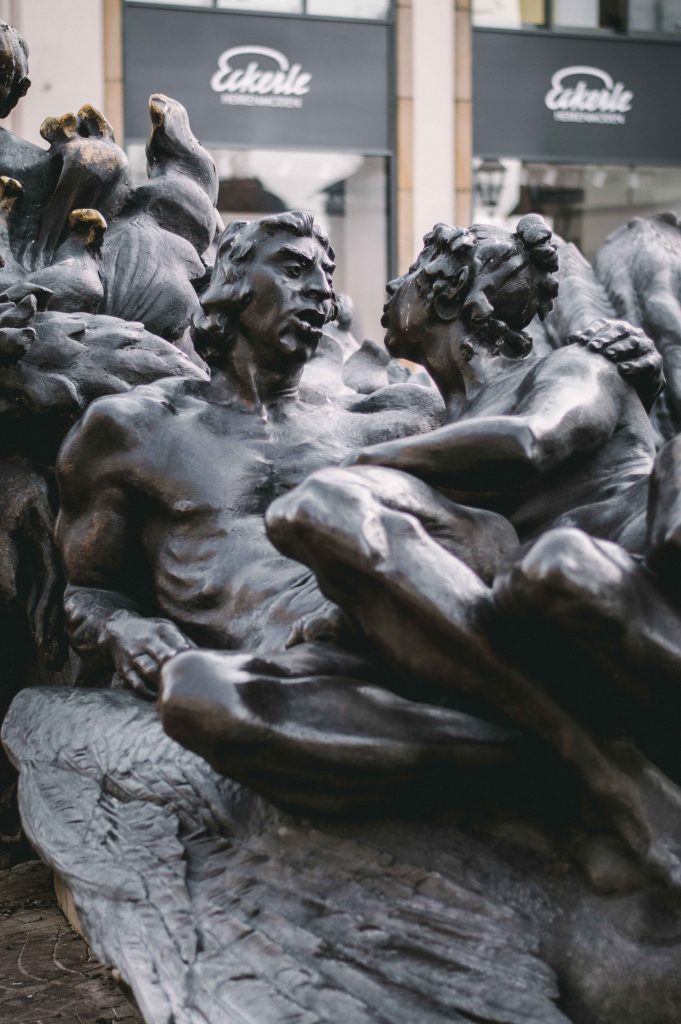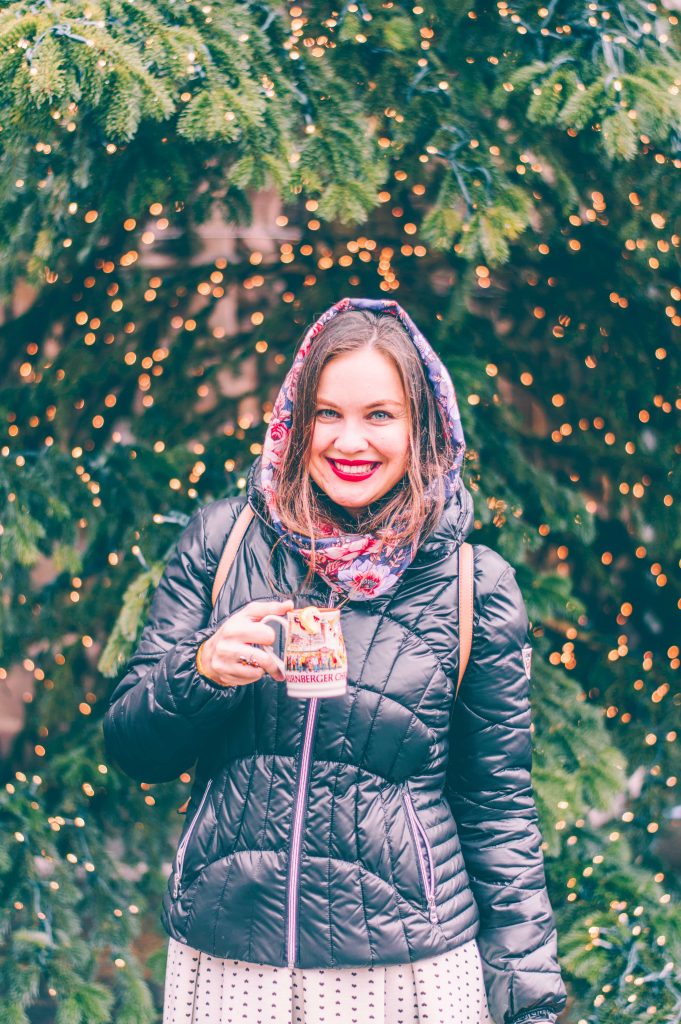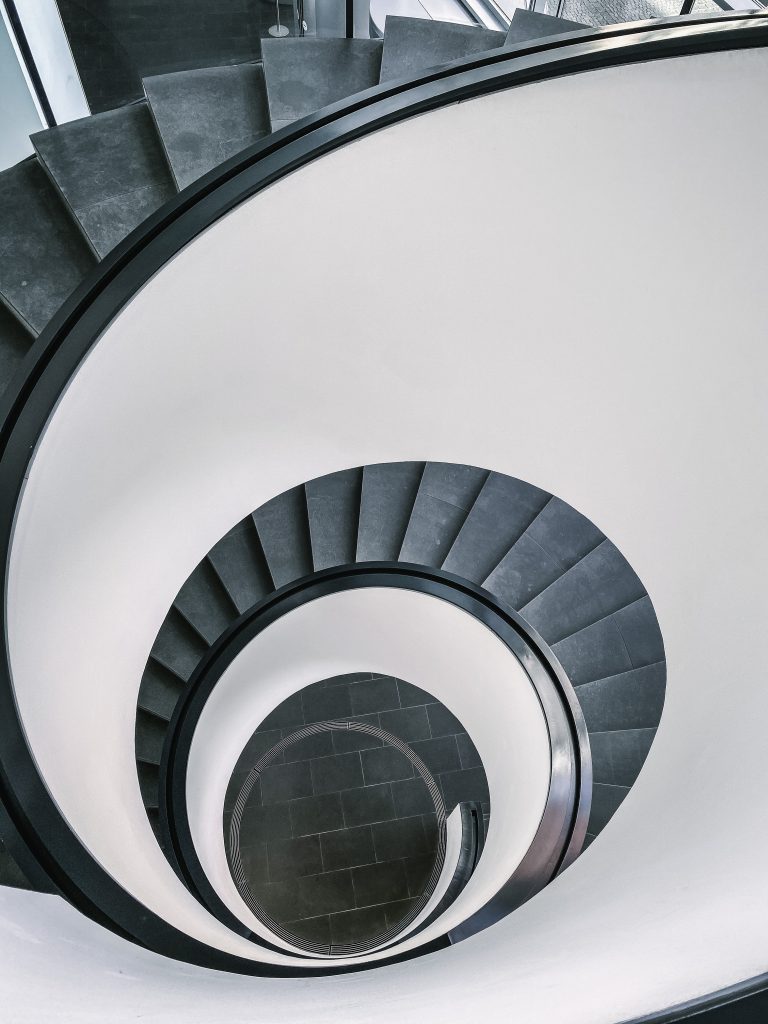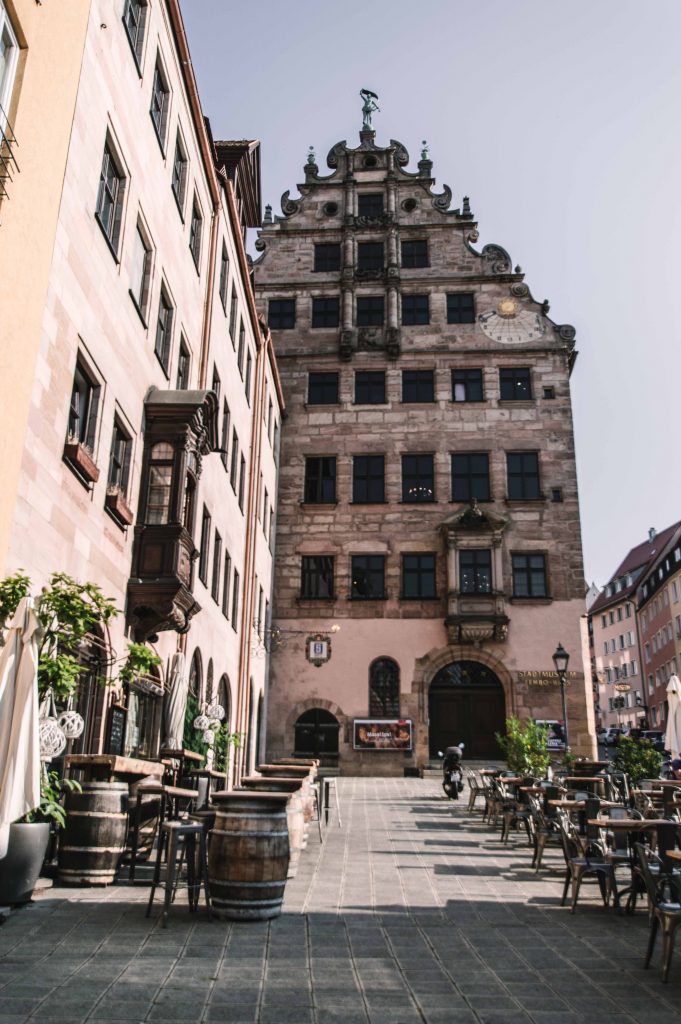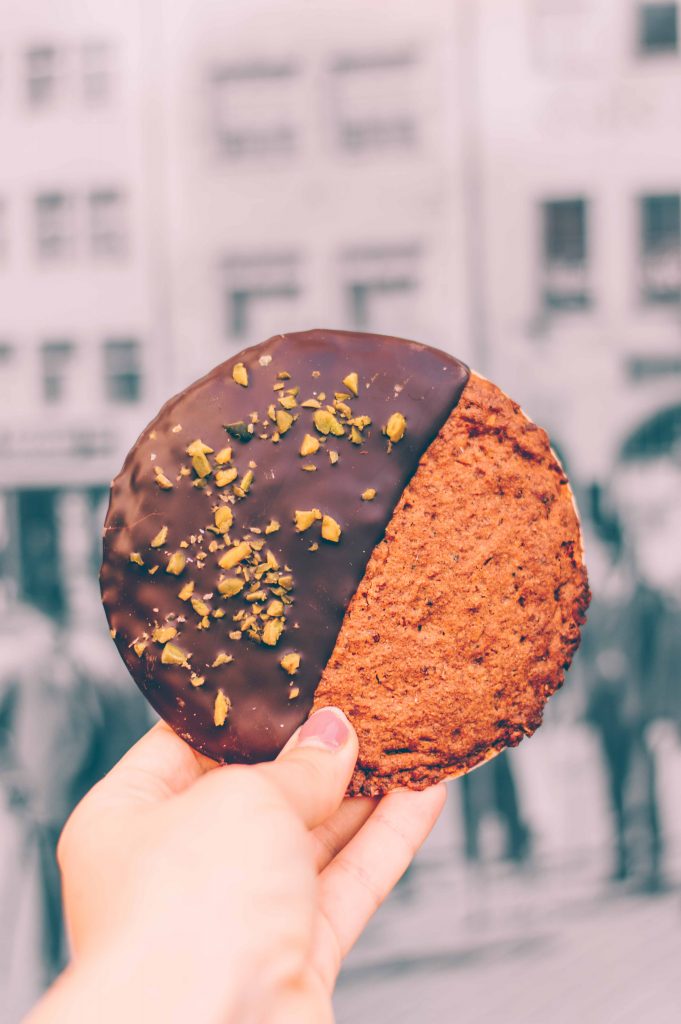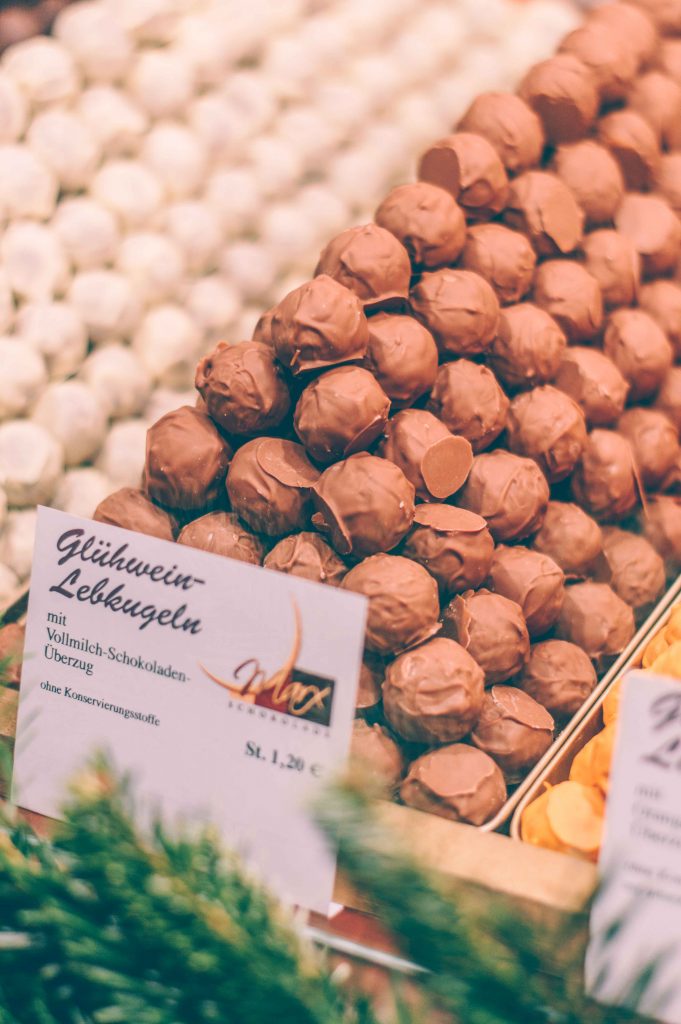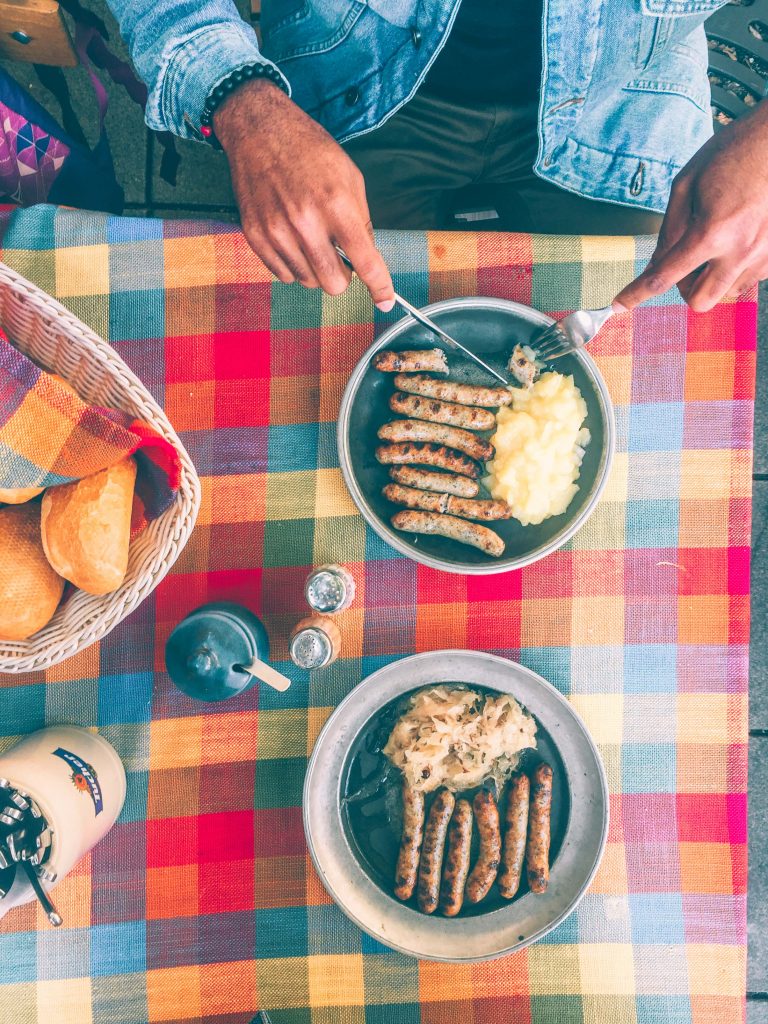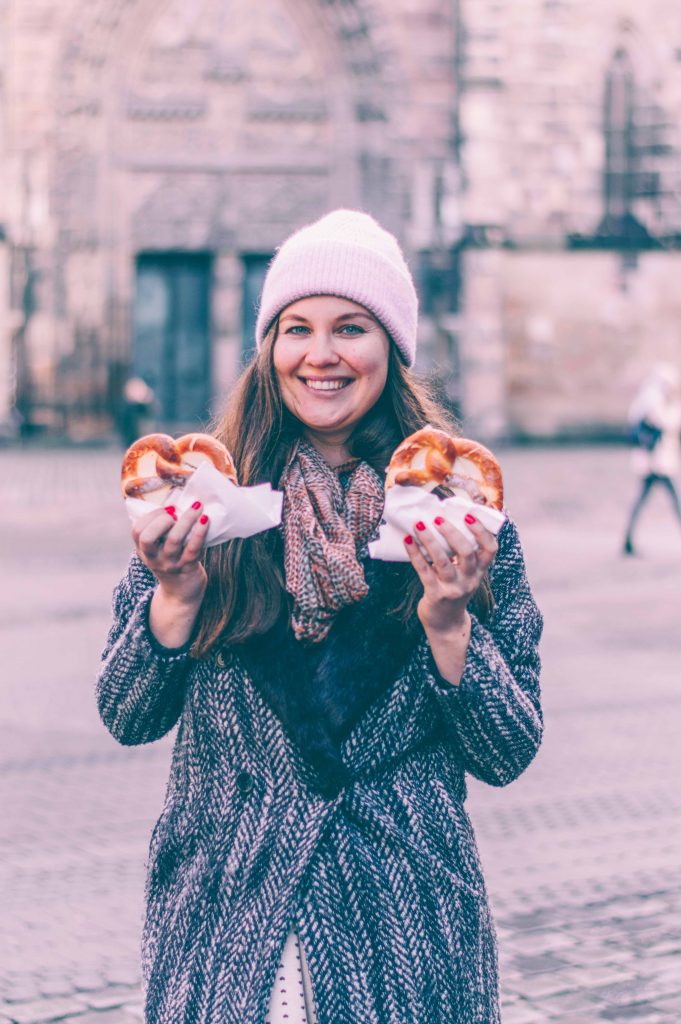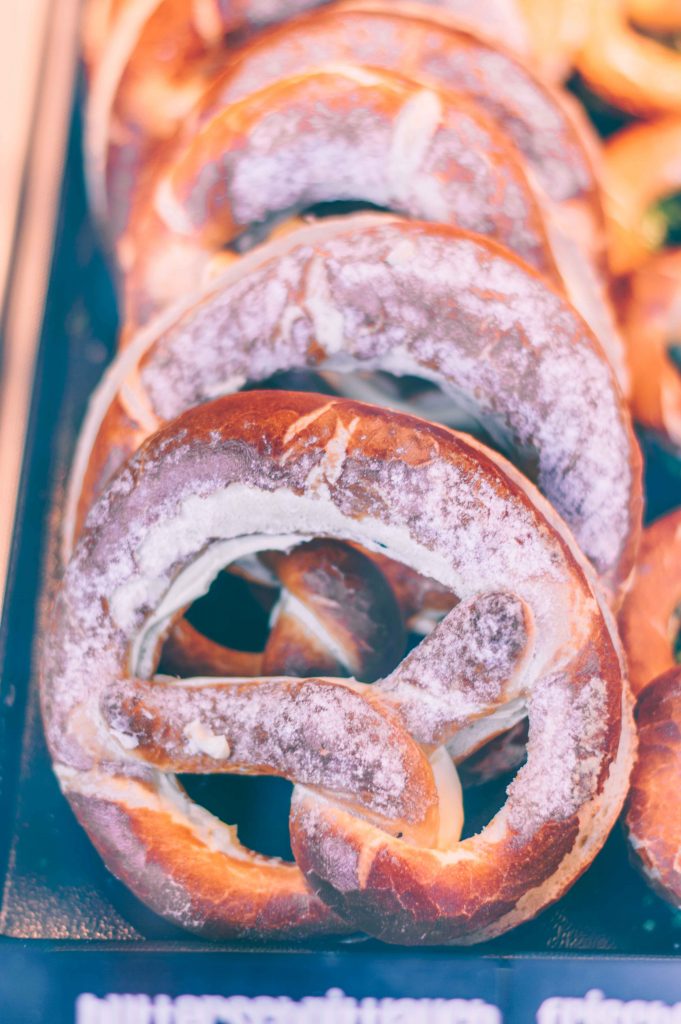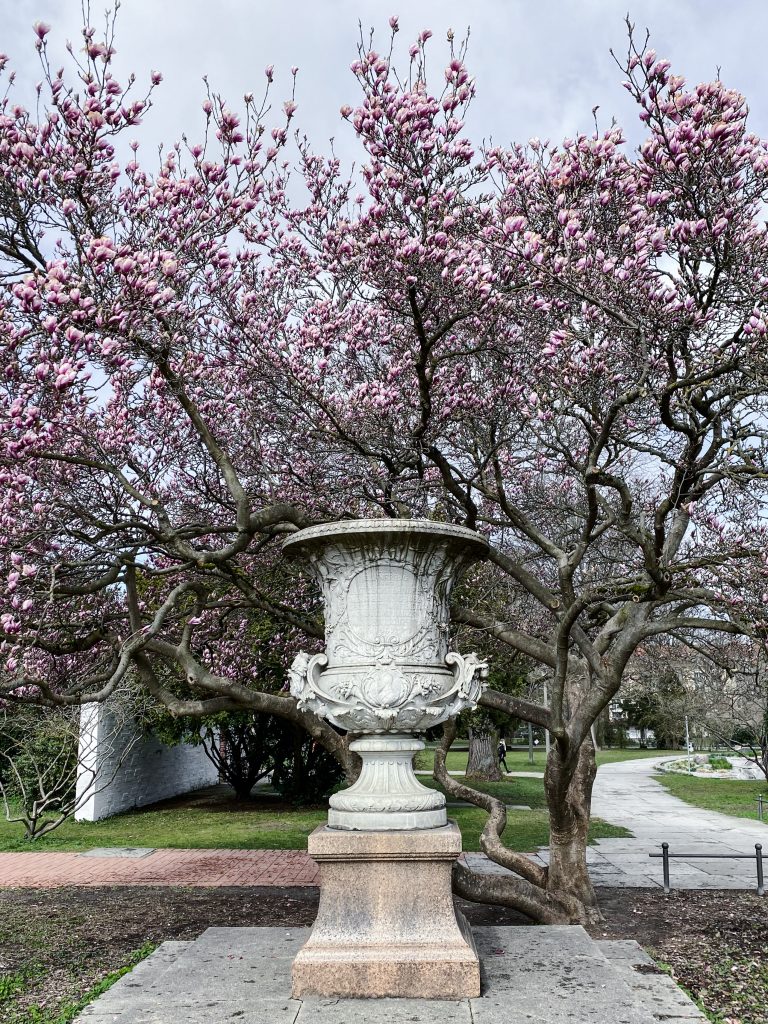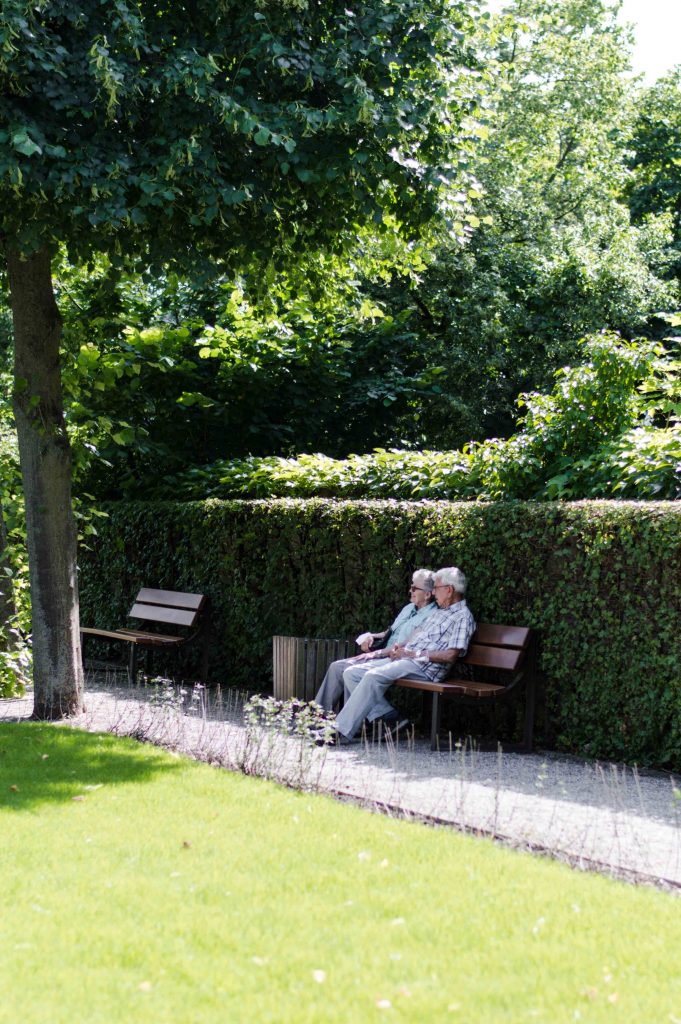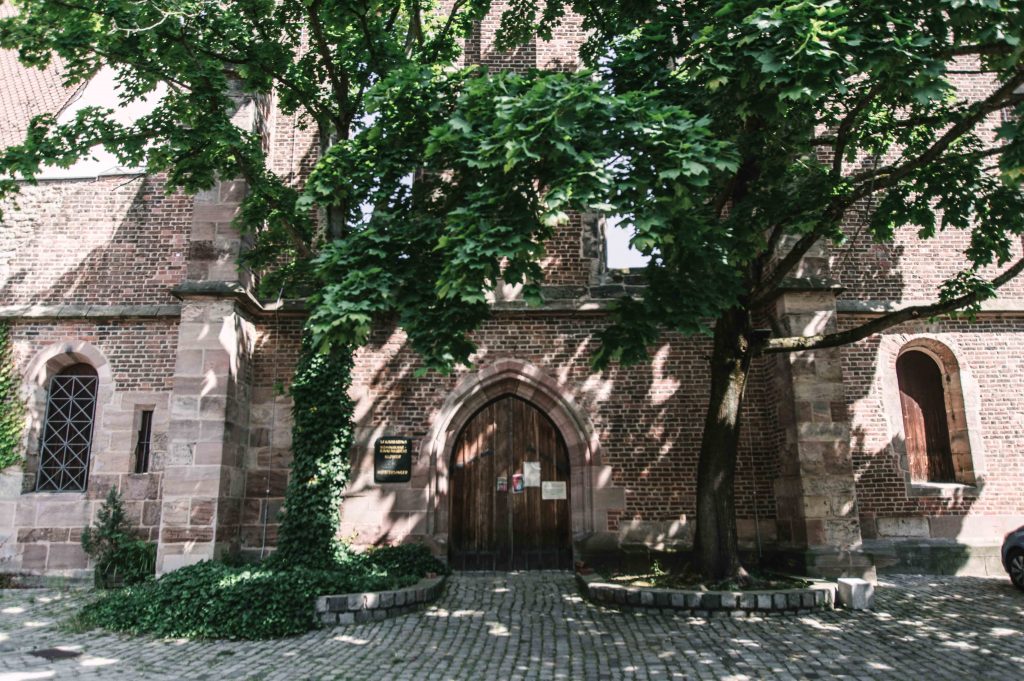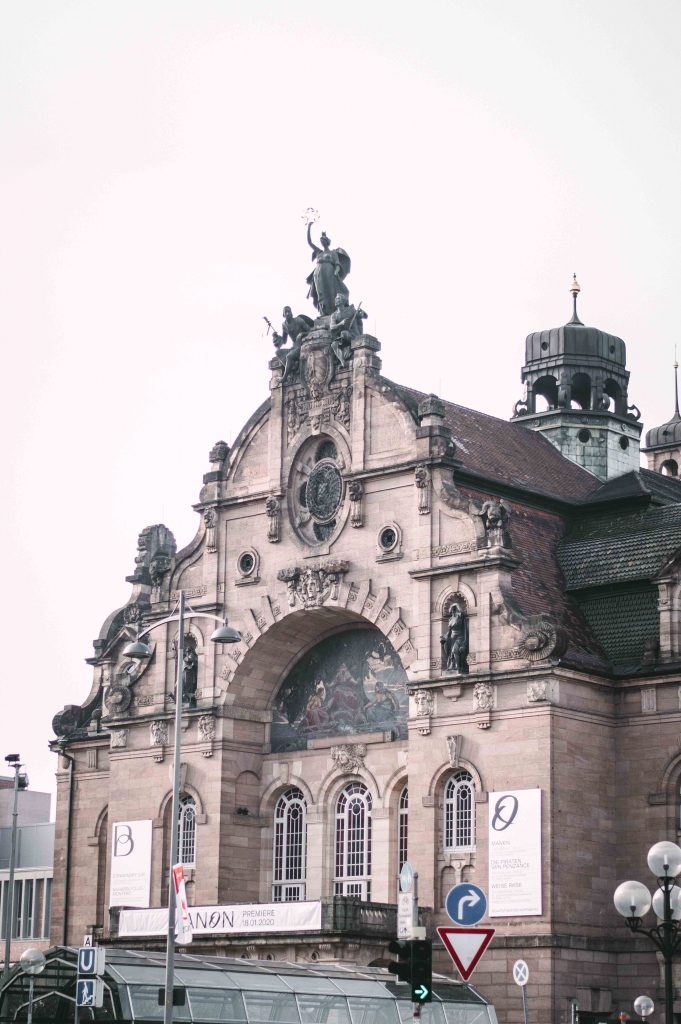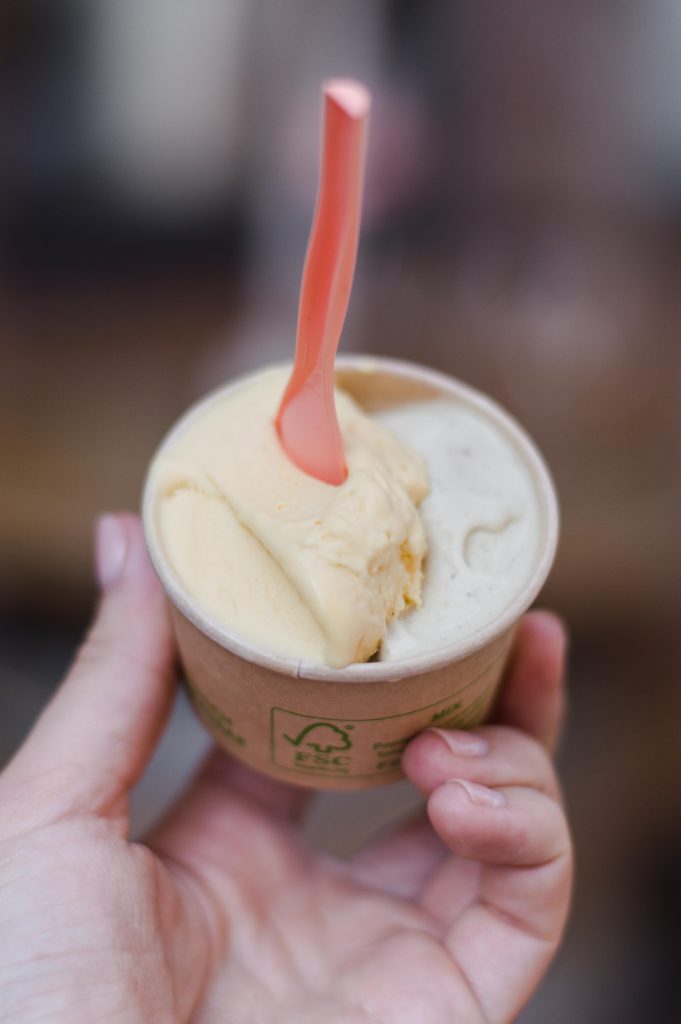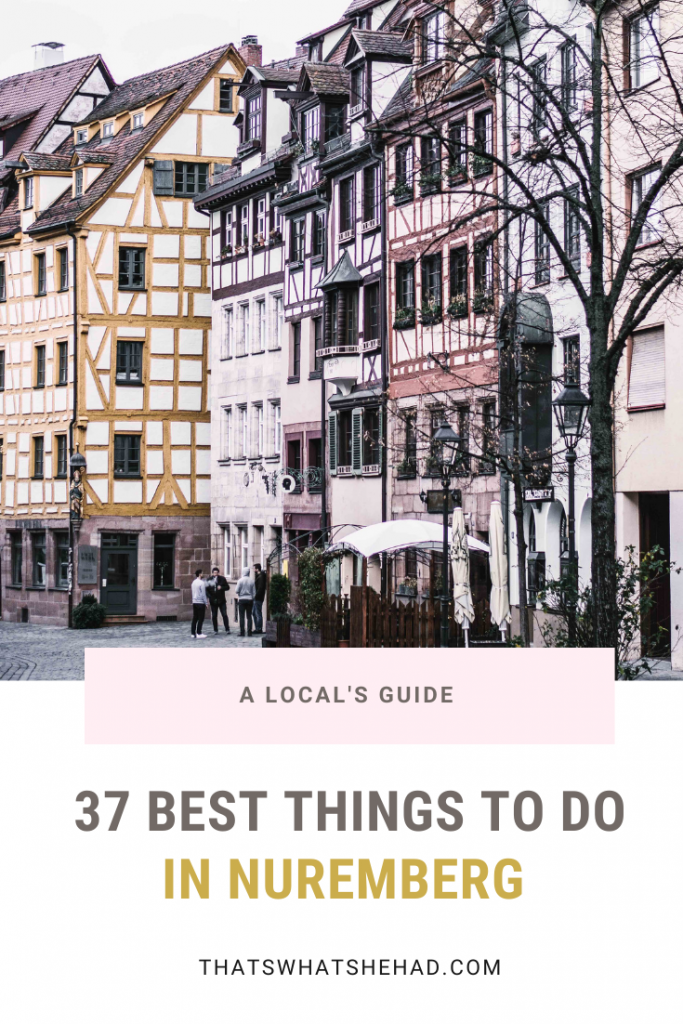How much do you know about Nuremberg? Whatever your answer is, I bet, you know more than I did three years ago, when I moved here. The only association I had with the city was Nuremberg trials, a vague memory from the history lessons at school. Not that it is incorrect, but there are so many more things to do in Nuremberg, besides visiting the courtroom 600, that are fascinating, beautiful, and, on occasion, delicious!
Nuremberg is the home of one of the most renown German painters, Albrecht Dürer. You can visit his house in the Old Town, see his face painted on buses and garbage trucks — I am yet to figure out what that is about — and, in case you fly in, the airport is also named after him.
Nuremberg Christmas Market is considered one of the best Christmas markets in Germany, if not all of Europe. If you are visiting in December, you are up for a winter wonderland fiesta, full of sweet mulled wine, sparkly ornaments, and spiced gingerbread cookies.
And speaking of cookies, no-one does Christmas gingerbread better than Germany. Elisenlebkuchen, the gingerbread cookie that originated in Nuremberg, is the epitome of Christmas baking and might be my favorite thing about the city.
All in all, there are plenty of things to do in Nuremberg and I am happy to share my favorite ones with you. I have divided the list into several categories for convenience: things to do in the Nuremberg Old Town, World War II related sites, museums, shopping, must-try foods, and, my favorite, what to do if you want to spend a day like a local.
Things to Do in Nuremberg Old Town
Guided Walking Tour
I love to start exploring new cities by taking a walking tour. It gives you a basic historical and cultural background of the place and helps to orient yourself in the city. I have taken this free walking tour when I moved to Nuremberg. They are only available on weekends, however, so if you are traveling during the week, check this tour instead.
The Market Square (Hauptmarkt)
If you prefer to explore on your own, let’s start in the heart of the city, at the market square. Every day, except for Sunday, you will find striped red-and-white tents selling fruits, vegetables, cheese, and meat here. If you rent an Airbnb and are planning to cook yourself, I highly recommend to seek out the stalls that only sell local and seasonal produce — that means no pineapples, mangoes, or cherries in January. They are located closer to the Wicklein Lebküchnerei (a gingerbread shop) and look a little more boring than the other stalls at the market, without the heaping piles of imported fruit.
There are several vendors who only come on Friday and Saturday: Stefans Käsekuchen that sells all kinds of German-style cheesecake and a local beekeeper with all kinds of honey and honeycomb. I highly recommend both. In summer, there’s also a Demeter cart on Friday mornings that offers all kinds of local organic greens and vegetables.
The Church of Our Lady (Frauenkirche)
While we are at the market square, let’s scratch off a few popular attractions on our must-see list. The Church of Our Lady, located on the eastern side of the square, is one of the three main churches in Nuremberg.
From the balcony of this church, every year the Christkind, a blonde angelic girl who is believed to bring presents for holidays in many European countries, reads a prologue, thus signifying the opening of the Christmas market.
Another notable feature of the church is Männleinlaufen, a mechanical clock that comes alive every day ay noon. The moving figurines represent the Holy Roman Emperor and his prince-electors.
Beautiful Fountain (Schöner Brunnen)
The citizens of Nuremberg, clearly, didn’t put much effort into naming the fountain, but I can’t argue with their logic: the fountain is indeed beautiful. But what’s more important is that it grants wishes — all you need to do is turn a small brass ring on the fence three times. When you come up to the fountain, you’ll see people lining up to turn it. Don’t join them. Walk around to the opposite side of the fountain (facing the Church of Our Lady) and find the exact same ring. This is the one locals turn for good luck.
Saint Lawrence Church (Lorenzkirche)
Steps away from the market square is Saint Lawrence church. Its magnificent Gothic-style facade is one of the most popular sights in the city, and the pipe organ inside is considered to be one of the largest in the world. Right at Saint Lawrence church starts Königstraße, one of the most popular pedestrian zones with lots of shops and malls.
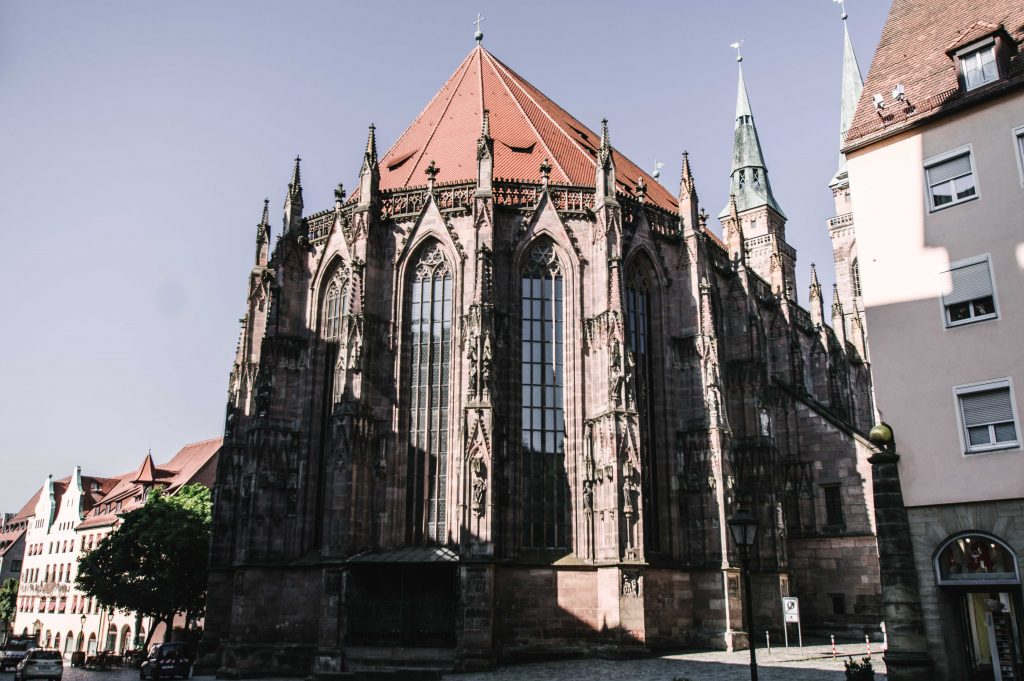
Saint Sebald Church (Sebalduskirche)
The last of the three most prominent churches in Nuremberg is Saint Sebald Church. All three are located within minutes from one another. The church is named after the patron saint of Nuremberg and houses the shrine of Saint Sebald. It is also the oldest church in the city, built in 1215. Right outside the church is one of my favorite German restaurants in Nuremberg, Bratwursthäusle, especially lovely during summer months when you can sit outside and enjoy the view of the church.
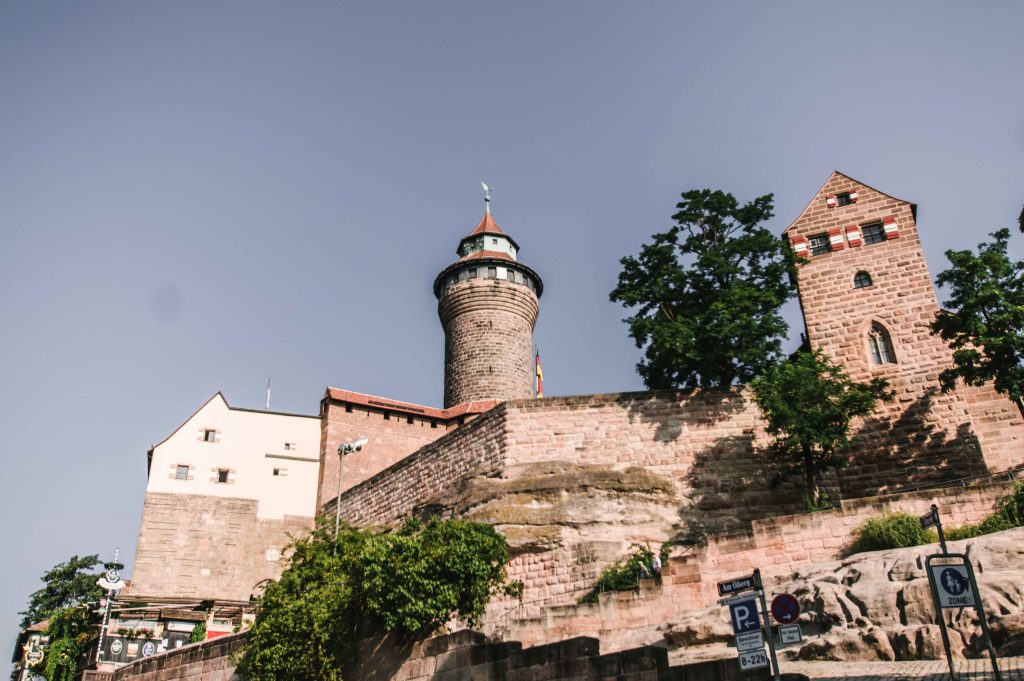
Imperial Castle of Nuremberg (Kaiserburg Nürnberg)
The castle of Nuremberg does not look like a magical castle you’ve seen in Disney cartoons, rather it’s a group of several fortified buildings located on a hill, looming over the Old Town. You’ll have to walk uphill to reach it, but the walk is quite short and the view of the city from the top is all worth it.
Inside the castle is a museum, surprisingly, not as popular among tourists as the viewing point is, which means you can explore the inner rooms of the castle without the crowds.
Weißgerber Lane (Weißgerbergasse)
Weißgerbergasse is probably the most romantic and fairy-tale-like street in the city. Here you will find a string of colorful half-timbered houses, that used to belong to leather makers and these days house cafes and boutique shops.
Insider tip: Bergbrand coffee shop right at the start of the street is one of my favorite spots in the city to sit with a cup of truly great coffee outside and people watch.
Hospital of the Holy Spirit (Heilig-Geist-Spital)
Heilig-Geist-Spital was the the largest hospital in the city at the time of its construction in the beginning of the XIV century. It was used to care for elderly people and people in need. Today, it houses a popular restaurant, also named Heilig-Geist-Spital, that serves Franconian specialties. The most unique feature of the building is that part of it is constructed over the Pegnitz river. The bridge facing Heilig-Geist-Spital is one of the most popular photo spots in Nuremberg.
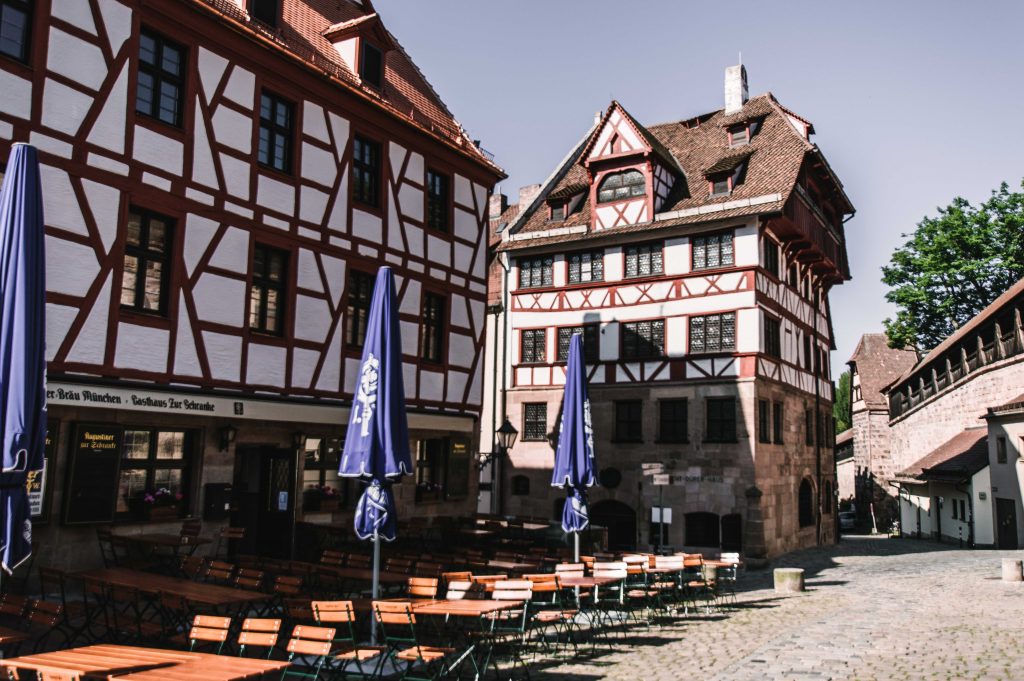
Albrecht Dürer’s House (Albrecht-Dürer-Haus)
One of the most prominent German painters, Albrecht Dürer, was born in Nuremberg. He lived and worked in a five-storied half-timbered house, located not far from the Imperial Castle, from 1509 until his death in 1528.
Today, you can visit a museum dedicated to Dürer’s life and work inside the house. It features period furniture, a recreation of Dürer’s workshop and copies of his most famous paintings. The originals are displayed in the most respectable museums around the world: from the National Gallery in London to the National Gallery of Art in Washington, to the Uffizi gallery in Florence. However, you can find a few of his works in Nuremberg, in the Germanisches National Museum.
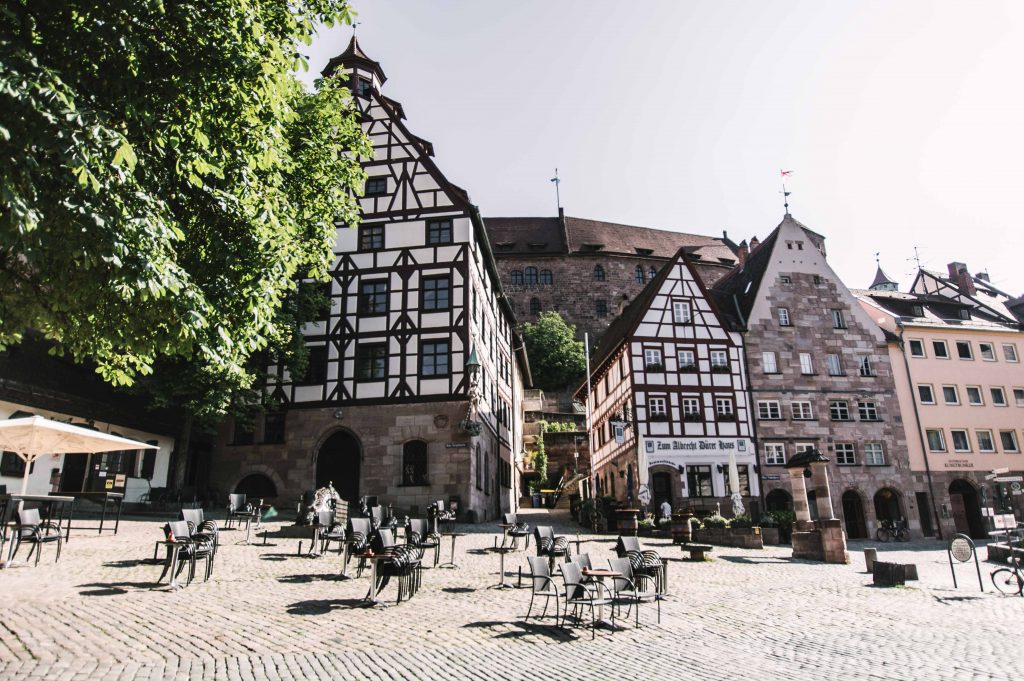
Square at the Tiergärtner Gate (Platz am Tiergärtnertor)
Tiergärtnertor square is not to be confused with Albrecht Dürer’s square which is located only a few minutes away, down the hill from the castle. The latter is where you’ll find the monument of Albrecht Dürer, the former is a chill out spot for Nuremberg locals and tourists alike right by Albrecht Dürer’s house. Here, you can have a coffee at Cafe Wanderer, a beer at Augustiner Zur Schranke, or simply sit down right on the pavement and chill.
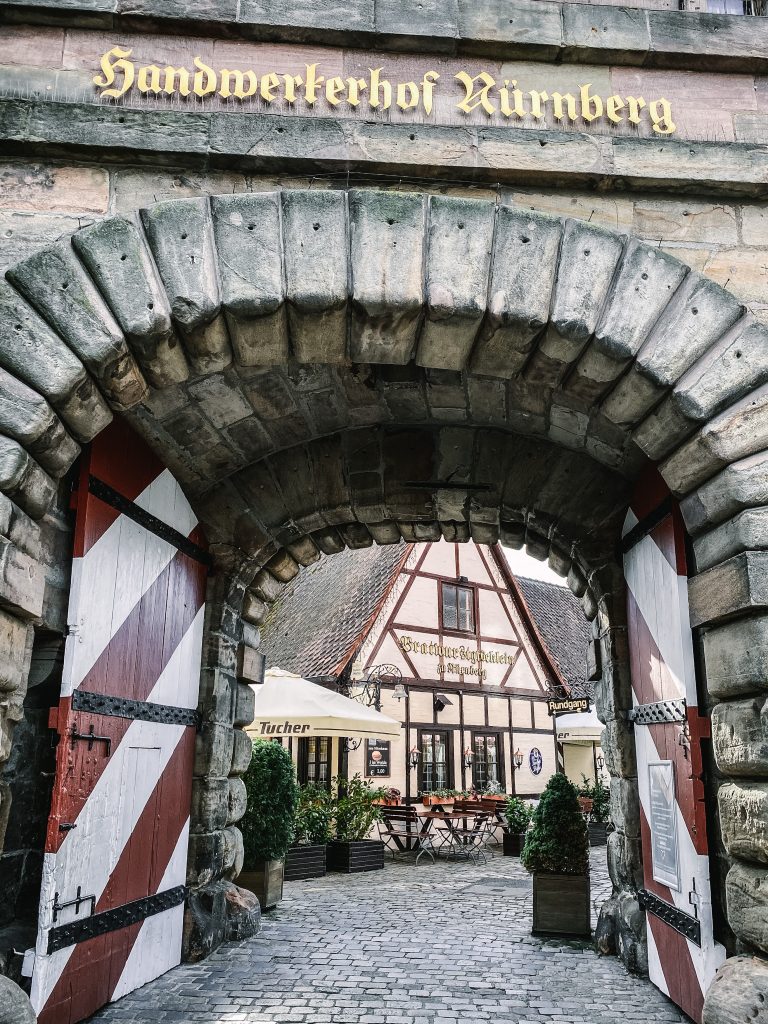
Craftmen’s Courtyard (Handwerkerhof)
Handwerkerhof translates as “craftsman’s yard”. It is a small area within the Old Town, close to the main train station, with lots of artisan’s shops and cute cafes. If you are looking for a souvenir, here you’ll find Christmas ornaments, ceramics, leather, and wooden toys to name a few. Even if you are not up for shopping, Handwerkerhof is one of the prettiest corners of the Old Town with lots of Medieval houses and is pleasure to explore.
Insider tip: Café in der 12 is my favorite spot for coffee, when I am in the area.
Marriage Merry-Go-Round (Ehekarussell)
The grotesque bronze fountain right by the Weißer Turm tower looks disturbing as it is, with half-naked men and women, bizarre animals and skeletons strangling each other, but once you learn that the sculptures represent the stages of marriage, it becomes outright horrifying. Or funny, depends on how you look at it.
Rock-Cut Cellars at Hausbrauerei Altstadthof (Historische Felsengänge)
The cellars have been cut into red sandstone in the XIV century, when a law obliged everyone who was brewing beer to have a cellar for its fermentation and storage. The cellars turned out to be so stable that not only did they survive to our days, but served as a bomb shelter for the citizens of Nuremberg during WWII air raids. Today, they are partly used to ferment beer made by Hausbrauerei Altstadthof. The tours are available on a daily basis in German. The tours in English take place every Saturday and Sunday at 11.15 am.
Nuremberg Christmas Market
If you are visiting Nuremberg in November-December, chances are you are here for the Christmas market. It is one of the most popular markets in all of Germany, if not the world. If you ever dreamed of a fairy-tale like Christmas, you’ll find it here: hot mulled wine, spiced gingerbread, artisan Christmas ornaments, and something indescribable in the air that makes you feel joyous and excited. I wrote a detailed guide about Nuremberg Christmas market.
Things to do in Nuremberg Related to World War II

Documentation Center Nazi Party Rally Grounds (Dokumentationszentrum Reichsparteitagsgelände)
If you are a World War II history buff, there’s much for you to explore in Nuremberg, starting with Nazi Party Rally Grounds, that cover 11 square kilometers in the southeast of the city. The enormous area with gigantic structures was built to accommodate party rallies of the National Socialists. Six rallies took place here from 1933 to 1938. Today, you can visit the Documentation Center at the grounds that houses an exhibition dedicated to the history of the National Socialist Party and the rallies.
After you have visited the exhibition, walk around the grounds and see the Congress Hall, a monumental U-shaped building inspired by the Colosseum; the Great Road intended to be the parade road for Wehrmacht; and the Zeppelin Field arena with its grandstand for the speakers. The field itself, that was meant to accommodate two hundred thousand people, is used as a stadium these days, but you can see the arena up close and personal.
Insider tip: the walk from the Documentation Center to the Zeppelin Field arena will take at least 20 minutes. The road goes around the lake, so it’s windy during winter months, dress appropriately.

Memorium Nuremberg Trials (Memorium Nürnberger Prozesse)
Nuremberg Palace of Justice, and its courtroom 600 in particular, are world-famous as the place where the leaders of the Nazi regime were tried after the end of WWII. You can see the courtroom with your own eyes today, as well as visit the museum located on the top floor of the courthouse. The exhibition at the museum is one of the most interesting I’ve visited in Nuremberg and includes artefacts, like the benches on which the defendants sat during the trials.
The courtroom 600 served as a working courtroom up until the 1st of March 2020, which meant that visitors could only see it on weekends. Luckily for the tourists, the courtroom is available for visits more often now.
Historic Art Bunker (Historische Kunstbunker)
Remember how we talked about the cellars cut into bedrock back in XIV century to store beer? Those same cellars, albeit reconstructed, were used to protect important pieces of art during the World War II from bombings. While 90% of the Old Town architecture was destroyed during the air raids, many valuable works of art survived thanks to the vaults built as deep as 24 meters under the castle hill.
Must-Visit Nuremberg Museums
Germanisches National Museum
Germanisches National Museum houses over 1.3 million objects and is considered Germany’s largest museum of cultural history. Don’t you worry, only 25 thousand are exhibited! The reason I love this museum is actually an architectural one: a former Carthusian monastery is hidden (as much as one could hide a monastery) inside the museum building. It’s quite fascinating how the old and the new come together: you walk into a bright, sun-lit modern lobby to buy a ticket, go through a glass door and find yourself in dimly-lit cloisters.
As for the collection, you will find the works of Albrecht Dürer and Rembrandt, the earliest surviving globe, as well as the first pocket watch here. The globe seems to be the most popular tourist attraction, but it’s the cloisters that attract me to the museum again and again.
Just outside of the museum, between its old and new buildings, is the Way of Human Rights (Straße der Menschenrechte). Twenty seven pillars made of white concrete are engraved with articles from the Universal Declaration of Human Rights. The quotes are in German and one more language, different on each pillar. The monument is meant to serve both as a sign of remorse for the past and as a reminder of the importance of human rights.
New Museum (Neues Museum)
Neues Museum, literally translated as New Museum, is another favorite of mine. The building which was constructed specifically for the museum is a paradox of sorts. Its enormous glass facade stretches for 100 meters, yet it is well hidden within the Old Town. You’ll see glimpses of its modern exterior in between the medieval buildings, but the whole structure will only reveal itself once you are standing right in front of it.
Inside, one of the most prominent features is the spiral staircase, which provides ample opportunities for creative photography, in case you need a stunning shot for your social media.
The exhibits are pieces of art and design from the 1950s to the present day spread around almost 3000 square meters. The museum showcases new collections every so often, so it’s always a fascinating experience to visit.
Toy Museum (Spielzeugmuseum)
Despite the name that suggests that this museum is best suitable for kids, Toy Museum is fun for all ages. I visited it way before Kroshka was born.
Nuremberg has long been well known as the center of the toy industry. The tradition of making toys goes back 600 years and continues into the present day with the International Toy Fair, the largest and most popular of its kind, taking place in the city.
The museum boasts a collection of over 85 000 objects that showcase the cultural history of toys from the ancient times to the present. My favorite part of the museum, not surprisingly, were the vintage doll houses and, in particular, extremely detailed doll kitchens. Another fascinating collection presents the toys that were popular during Nazi rule.
Insider tip: in summer, visit the museum cafe in the inner courtyard and have a cup of coffee while watching the trains ride on the toy railroad.
Tucher Mansion and Hirsvogel Hall (Museum Tucherschloss und Hirsvogelsaal)
I can’t believe how rarely this gorgeous mansion makes it to best things to do in Nuremberg lists, but maybe it is for the better: you can enjoy the place in solitude. The Tucher mansion was built in the beginning of XVI century and is a great representation of the daily life of the merchant families.
On the outside, the mansion doesn’t look like much and you might just pass it by. But the inner courtyard with its garden and Renaissance architecture is so lovely, and the Hirsvogel Hall, located in the back of the garden, is the cherry on top of the cake.
I was lucky enough to visit the hall all by myself and take about a thousand pictures. But given how few people know about this place, it’s likely you’ll have the same opportunity.
Insider tip: there’s a White Bulldog coffee shop right by the mansion where you can have a good cup of coffee and cake afterwards.
City Museum at Fembo House (Stadtmuseum im Fembo-Haus)
If you are in the mood to learn more about the history of Nuremberg, stop by the Fembo House, the only late Renaissance merchant’s house in the city, located on the way up to the Imperial Castle.
The Fembo House is also the only historical building in the Old Town that survived the bombings in World War II. It is worth a visit if only to witness the grandeur of the historic rooms: carved wooden furniture, elaborate paintings on the ceilings, and a recreation of a traditional kitchen. And if you make it to the top floor, you’ll find a scaled model of Nuremberg, one of the most precise in Germany.
Foods You Must Try in Nuremberg
Elisenlebkuchen
Elisenlebkuchen used to be the ultimate Christmas treat. It still is, of course, but nowadays, thanks to tourists coming to Nuremberg all year round, this cross of cookie with gingerbread can be found in specialty shops any time of the year. While the locals are mortified by the idea of eating lebkuchen in June, I am all for being able to eat one of my favorite cookies of all time whenever a craving hits.
Elisenlebkuchen is famous for having a long shelf life — we are talking weeks, if not months. But my favorite Elisenlbekuchen in Nuremberg is actually freshly made at Wicklein Lebküchnerei. They make the dough and bake the cookies right at the shop — the freshly baked cookies are displayed in the glass cabinet right in front of the door.
The shop offers a range of pre-packed Elisenlebkuchen of all possible flavors and sizes, too, that you can buy as souvenirs.
Lebkugeln and Lebkuchen Ice Cream
While we are on the topic of lebkuchen, I couldn’t help but mention the creative spins on the famous Nuremberg gingerbread, namely the lebkuchen-flavored pralines and ice cream. You can find both at Marx Schokolade, a specialty chocolate shop located a bit outside of the Old Town, but the walk (or a short bus ride) is well worth it.
The pralines with their melting-soft chocolatey center are irresistibly good and make for a wonderful edible souvenir to take home. The ice cream, while only available during warm months, might be one of the most unusual flavors I’ve tried.
Nuremberger Rostbratwurst
Not only does Nuremberg has its own cookie, it boasts its own sausage too. Nuremberger Rostbratwurst is a small sausage traditionally grilled by hand over open fire and served in groups of 6,8,10, or 12. It was the first sausage to obtain protected geographical indication, which means that it’s recognized by EU as a traditional, locally-produced specialty and must be made within city limits according to a specific recipe.
There are two major ways to eat Nuremberger Rostbratwurst: served on a plate with side dishes or in a bun as a quick fix. Have a meal at any of the German restaurants in Nuremberg and they’ll serve the sausages with potato salad, sauerkraut, or horseradish on a metal plate. Or, if you are in a hurry, stop by one of the red-and-white stalls in the Old Town to try Drei im Weckla, a bun stuffed with three sausages and spiced with mustard.
Insider tip: My favorite restaurant to eat Nuremberger Rostbratwurst is Bratwursthäusle, and my favorite stand for Drei im Weckla is Schlemmer Eck.
Pretzels
One of the most typical associations with Germany — a pretzel — has its roots in the region of Franconia. Nuremberg is the largest city in Franconia, so I think it’s safe to say, that you can find some of the best pretzels in Germany here. At least, the best pretzels I’ve tried in my life come from a small local chain of cafes and street stands, called Brezen Kolb.
Brezen Kolb offers plain pretzels with and without salt, but for the ultimate snack on-the-go choose one of their sweet or savory options: with butter and chives, with brie cheese, with salami, or with powdered sugar.
Things to do in Nuremberg if You Want to Spend a Day Like a Local
Coffee at Machhörndl Kaffee
Now to my favorite part of this list of things to do in Nuremberg: how to spend a day like a local. First off, start your day with a great cup of coffee at Machhörndl Kaffee. They have their own roastery and a few locations around the city, including one in the Old Town. This is, arguably, the best coffee in Nuremberg.
Insider tip: if they have pastel de nata (Portuguese custard tarts), do yourself a favor and have one with your coffee.
Swans at Wöhrder See
Wöhrder See is a lake located within Nuremberg city limits. While swimming in the lake is not allowed, during summer months you can rent a swan boat and spend some time in the water. Part of the shore on each side of the lake is turned into a sandy beach where you can sunbathe or have a picnic. If you are not in the mood for a swan ride, a trail around the lake is perfect for walking, jogging, or bike riding. There are plenty of meadows with ducks and gooses around, a playground for kids, and a cute little cafe Tante Norris, where you can get a lemonade, a beer, or ice cream.
City Park (Stadtpark)
Stadt park is the most beautiful place to be in spring when the trees are blooming and in autumn when the leaves are turning yellow and red. It’s perfect for picnics or leisurely walks. There are several playgrounds and a cafe in the middle of the park.
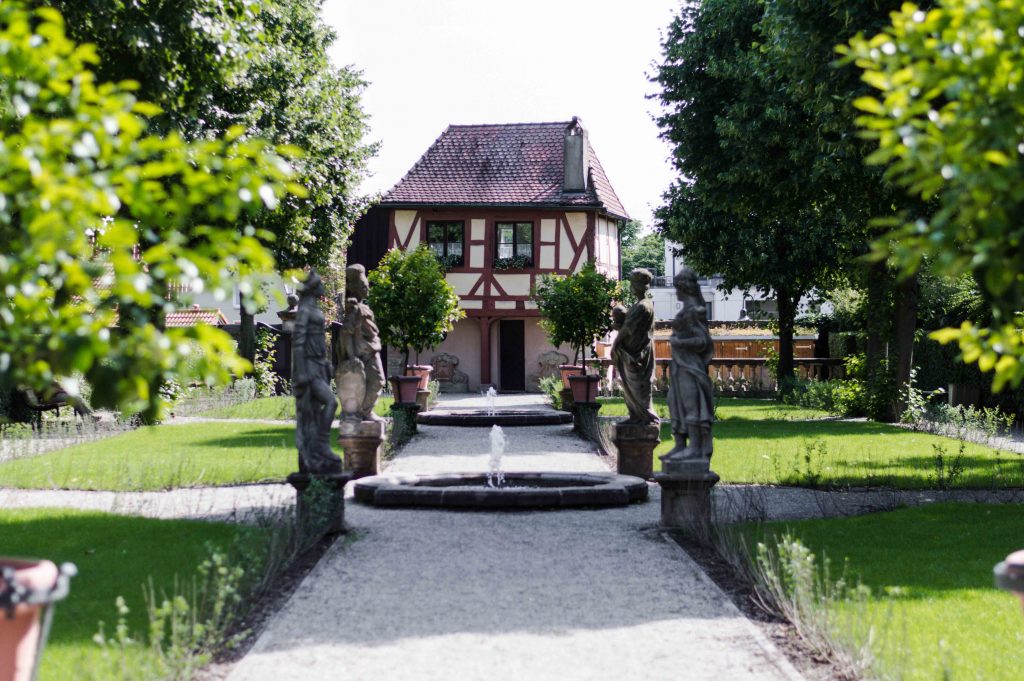
Gardens of the Hesperides (Hesperidengärten)
A little piece of Italy in Nuremberg, the gardens are located in St. Johannis neighborhood, just outside the Old Town walls. It took me three years of living in the city to make it there and, boy, did I regret not discovering it sooner.
Though small in size, the gardens provide respite on hot summer days, when all one needs is a bench in the shade and a pretty view. There are neatly-cut bushes, refreshing fountains and elaborate statues, including, but not limited to, a few statues of weirdly jolly babies.
St. John’s Cemetery (St. Johannisfriedhof)
Just steps outside the Gardens of the Hesperides is St. John’s cemetery. If you are the kind of person who loves walking around cemeteries wherever you travel (I certainly am), this place is one of the most notable in Europe. According to Nuremberg tourism board, it was named the most beautiful burial ground in Germany in 2013. It is also famous as the resting place of Albrecht Dürer.
Ruins of St. Catherine’s Church (Katharinenruine)
Katharinenkirche is a medieval-church-turned-open-air-venue. Built in the XIII century, it was severely damaged during the WWII bombings and partially reconstructed afterwards. Today, it is used as a venue for open air concerts, movies, and children plays during summer months. You can see the program and buy the tickets here.
State Theatre (Staatstheater Nürnberg)
Watching an opera performance is one of the things to do in Nuremberg I haven’t yet checked off my list, unfortunately. But I hope you do, as the Opera House in Nuremberg is one of the most popular in Germany, with its wide range of both classic and original works. Not to mention the building itself, an Art Nouveau masterpiece on Richard-Wagner square.
Ice Cream at Die Kleine Eismanufaktur
Possibly, the most beloved ice cream shop of Nuremberg locals is Die Kleine Eismanufaktur (The Little Ice Cream Manufactory), located at Weißgerbergasse. They source organic milk from a local farmer (only 20 km away from their kitchen); the other ingredients are organic or fair-trade, whenever possible. The flavors range from the classics like pistachio and dark chocolate to bolder ones like mango lassi and vegan ice cream with roasted almonds.
Groceries at Brot Schwarz and Madlon Scharff
Two of my favorite shops, when it comes to food specialties, are Brot Schwarz and Madlon Scharff. The two are located in a small street off the main square, right by each other. Brot Schwarz is a delicatessen that has been around since 1923 and offers a selection of freshly baked bread and local specialties, lots of cured meats and sausage in particular. Madlon Scharff is a tiny spice shop, where you can buy lebkuchengewürz, a blend of spices to make your own lebkuchen.
Shopping in Gostenhof
Gostenhof, or Go-Ho for short, is considered the hip, artsy neighborhood of Nuremberg. No wonder it’s here that you’ll find vintage and second-hand shops, small designer boutiques, and cute cafes. Here are a few of the most popular spots:
Vinty’s for second-hand clothes and accessories;
Frenkel & Co and Gostenhofer Buchhandlung for books;
edi m. store for furniture, design clothing and jewelry;
Goldkind for custom baby toys and presents;
bambiboom for clothes made of fairly-sourced textiles;
Zero Hero is the first shop where you can buy groceries without packaging.
And on this note I think I am going to end my list of best things to do in Nuremberg. I hope you enjoy the city and everything it has to offer. I’ve been exploring Nuremberg for the past three years. I hope this guide will help you do it in a shorter time frame!






